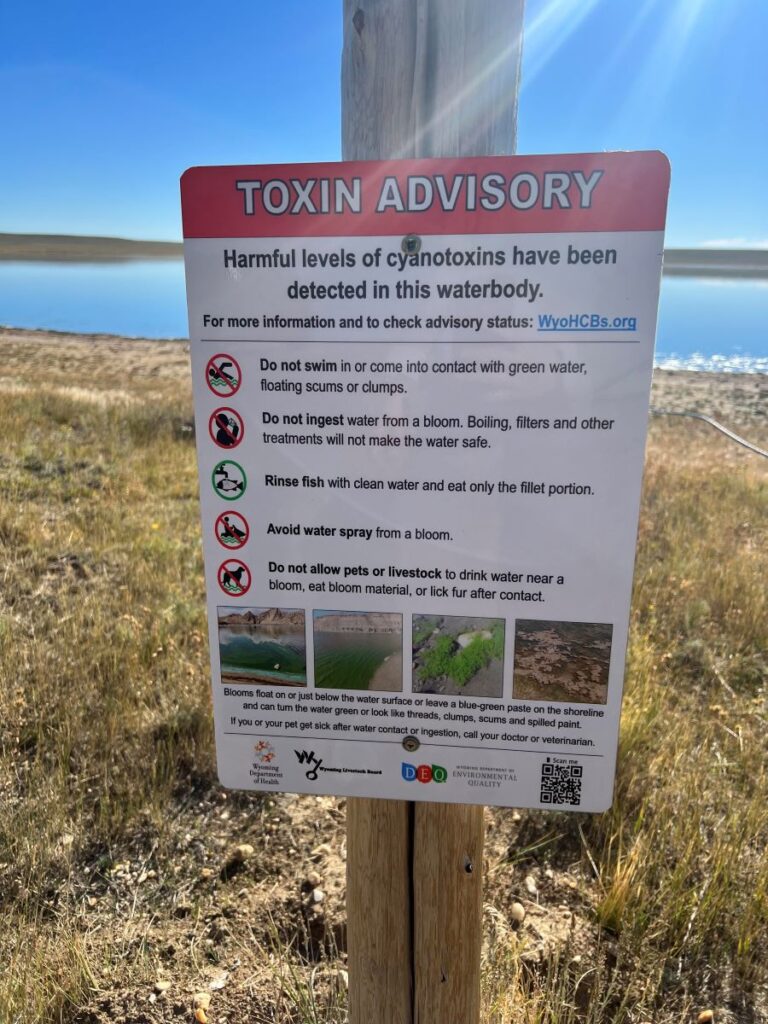- Cyanobacteria, also known as blue-green algae, can form harmful blooms in Wyoming waters.
- Blooms may appear in various colors and forms, posing risks to human and animal health.
- State agencies urge the public to report suspected blooms and related illnesses.
July 2, 2024 — As summer heats up and visitors head to Wyoming’s lakes and reservoirs, state agencies are warning about the potential dangers of harmful cyanobacterial blooms (HCBs) . These blooms, caused by blue-green algae, can produce toxins and irritants that threaten human and animal well-being.
. These blooms, caused by blue-green algae, can produce toxins and irritants that threaten human and animal well-being.
HCBs typically emerge in mid to late summer, affecting both flowing and stagnant waters. While they can manifest in various colors like green, tan, brown, or blue-green, their appearance may range from spilled paint or grass clippings to clumps, scums, films, mats, or gelatinous balls.
What to do around harmful algae blooms.
If a bloom is suspected, the Wyoming Department of Health (WDH) and Wyoming Livestock Board (WLB) recommend taking precautions:
- Avoid contact with water near the bloom, especially in dense areas.
- Refrain from ingesting water from the bloom, as boiling or filtering won’t eliminate toxins.
- Rinse fish with clean water and consume only the fillet portion.
- Avoid water spray from the bloom.
- Prevent pets and livestock from drinking water near the bloom or consuming bloom material.
- If contact occurs, rinse with clean water promptly and seek medical attention if adverse health effects arise.
The WDH and Wyoming Department of Environmental Quality (DEQ) encourage the public to report suspected blooms and related illnesses through the WyoHCBs.org website . Following investigation, the WDH may issue advisories for affected water bodies indicating the presence of cyanobacteria or toxin levels exceeding recreational thresholds. The website also includes a web map of current and past advisories, along with answers to frequently asked questions.
. Following investigation, the WDH may issue advisories for affected water bodies indicating the presence of cyanobacteria or toxin levels exceeding recreational thresholds. The website also includes a web map of current and past advisories, along with answers to frequently asked questions.
Image via Wyoming Department of Environmental Quality news release .
.


Leave a Reply